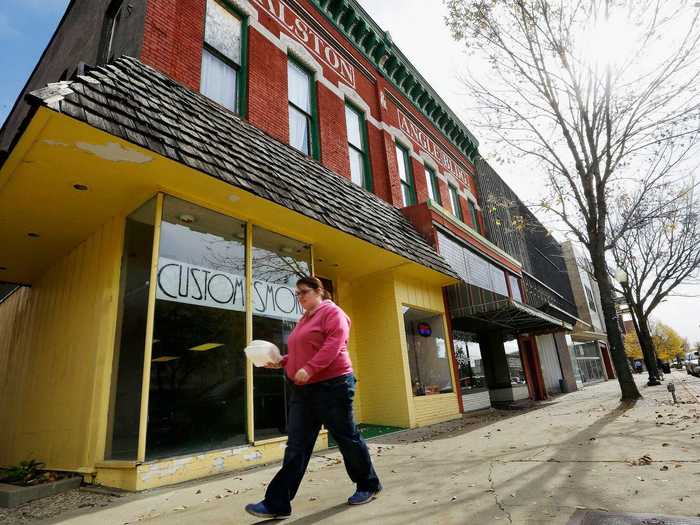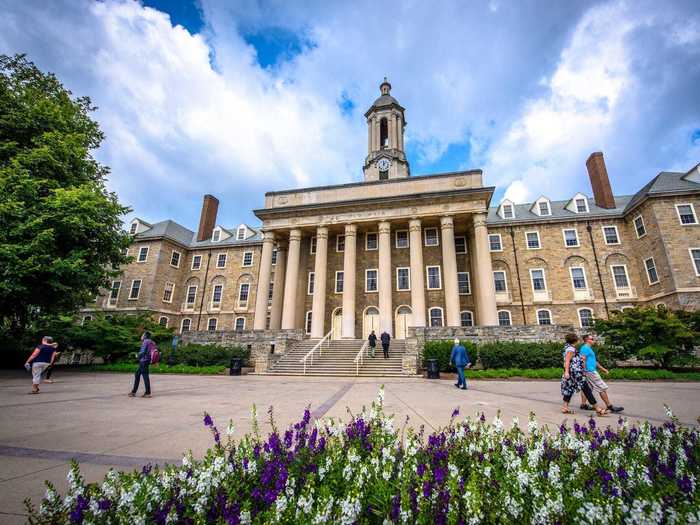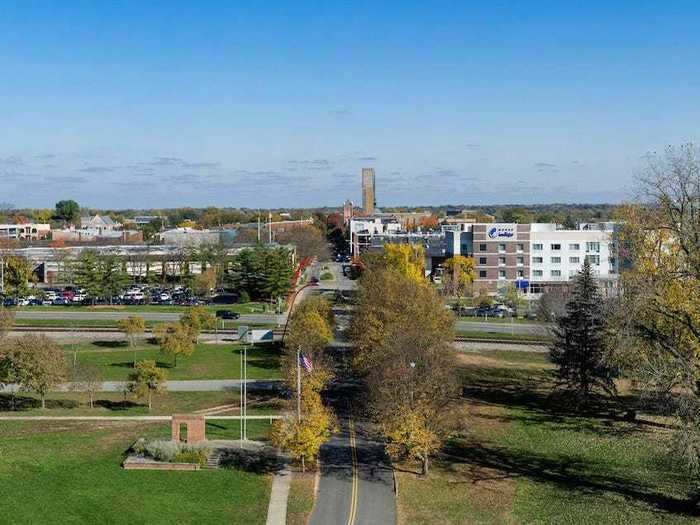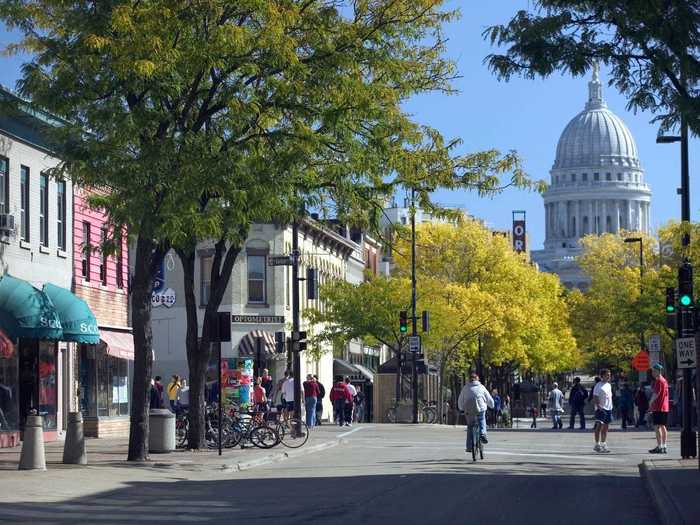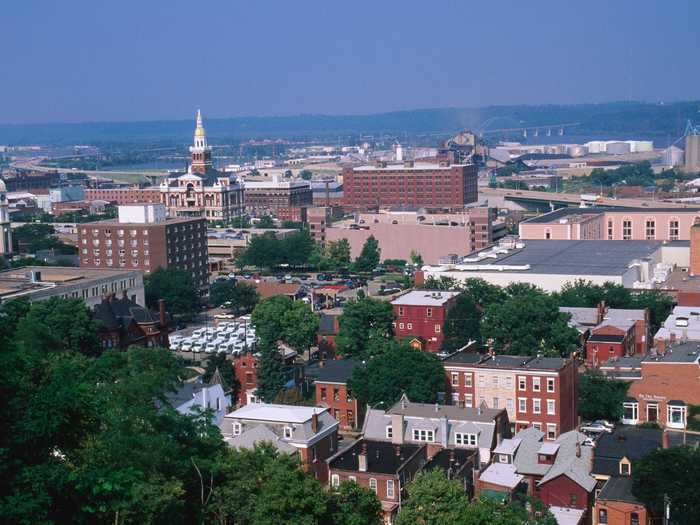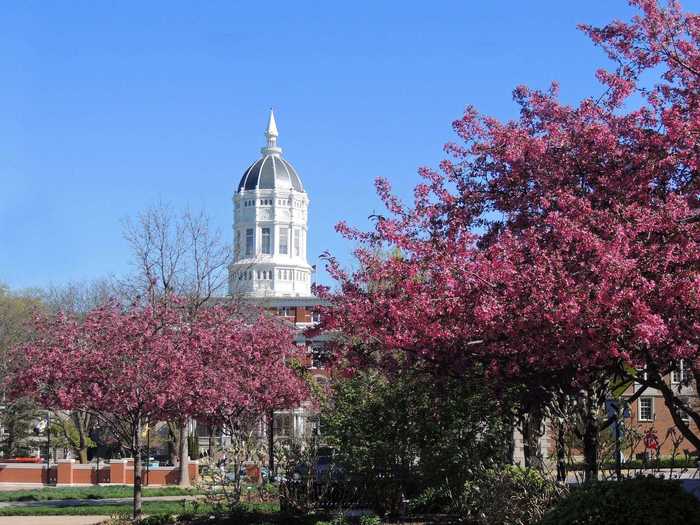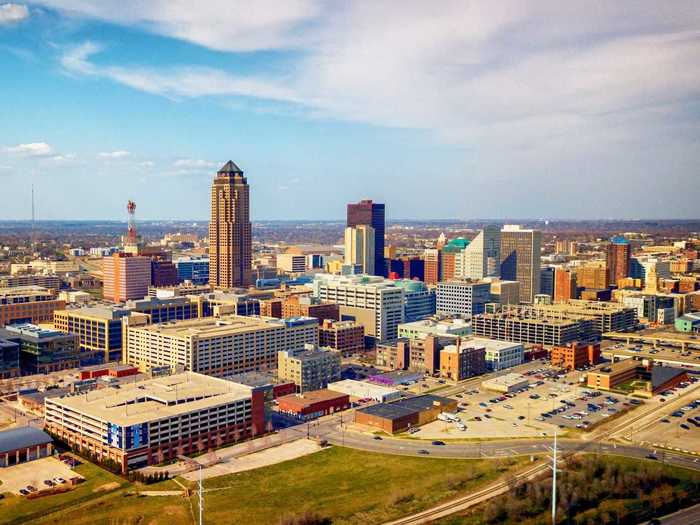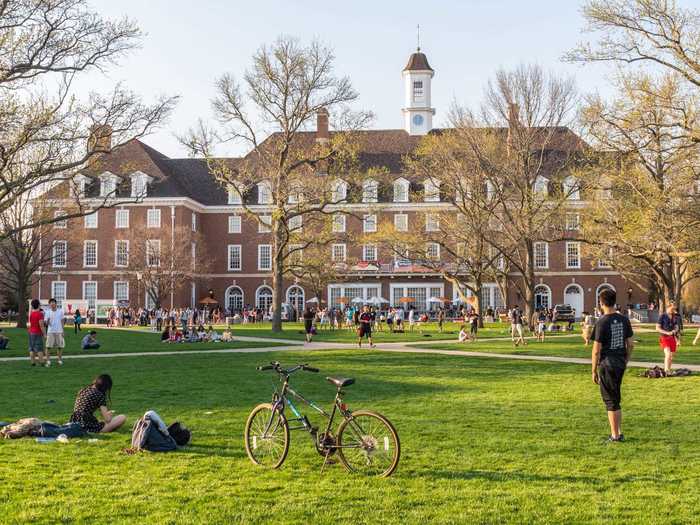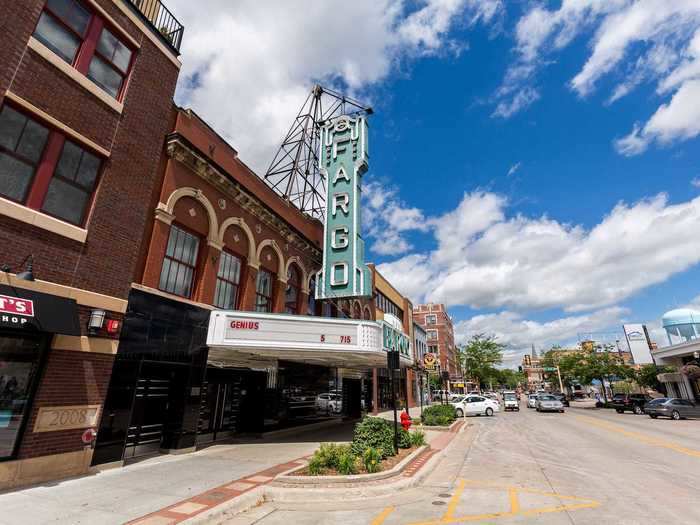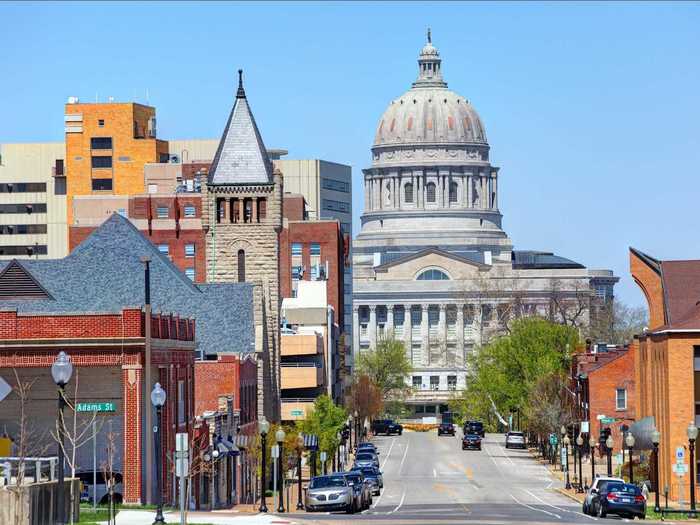Fargo, North Dakota, is the third best place to move to after coronavirus.Shutterstock - Some people might be considering moving to a new part of the country after the coronavirus pandemic.
- We used nine different metrics for over 380 US metro areas to calculate an overall score that we used to find the best cities to move to after the pandemic.
- Some of the 30 best cities to move to are located in Illinois, Iowa, and Wisconsin.
If you are considering moving to a new place after the novel coronavirus pandemic, you may want to consider one of these 30 cities.
Recent polling has suggested that many Americans are thinking about moving. A survey from Harris Poll reported by Axios shows about one-third of Americans are thinking about moving to less densely populated places, and recent research from Moody's Analytics found that places with a high share of jobs that require a bachelor's degree or higher and are less densely populated are likely to recover first from the economic impact of the pandemic.
During the pandemic and the stay-at-home orders to slow the spread of the virus, more and more Americans have transitioned to working from their homes. A Gallup analysis shows that share increasing over time. According to that polling, 62% reported they were working from home in a survey from March 30-April 2, compared to 31% of respondents from March 13-March 15.
New Gallup Polls show that even after stay-at-home orders lift and people can return to the office, some people are thinking about still working remotely, at least part of the time. In a Gallup survey from April 13-19, 53% of respondents said they would work remotely as much as they can, while 47% said they would return to the office as much as they previously did.
Business Insider decided to find out which cities could be the best places to live in after coronavirus for those Americans seeking a new home and planning to continue remote work.
To do this, we used nine different economic, educational, and demographic metrics from government data sources and academic research that we think people might consider when moving and that could help a metro area to recover more quickly from the economic effects of the coronavirus.
These measures are the pre-coronavirus unemployment rate, ability to work from home, population density, housing affordability, monthly household costs, cost of living, weekly two-way work commute, total elementary and secondary school spending per student, and share of residents age 25 and over who have at least a bachelor's degree.
Each measure was re-scaled to a uniform z-score, allowing us to add the values together to get a final overall index for each metro area which we then used to rank the 30 metro areas at the top of the list.
You can read more about our method and the metrics we used here.
Here are the 30 best cities to live in after coronavirus based on our analysis:
30. Danville, Illinois
Seth Perlman/AP
Danville's cost of living, the metro area's price level of goods and services compared to the US, is much lower than most metro areas at 21.4% lower than the national average. The city's population density of 84.3 people per square mile is also lower than most metro areas.
29. Grand Island, Nebraska
Dominic Chavez/The Boston Globe via Getty Images
74.1% of households spend less than 30% of their income on housing in Grand Island, indicating better housing affordability than most metro areas. Grand Island's cost of living, the metro area's price level of goods and services compared to the US, is slightly lower than most metro areas at 15.7% lower than the national average.
28. Peoria, Illinois
Henryk Sadura/Getty Images
Peoria's cost of living, the metro area's price level of goods and services compared to the US, is among the 100 metro areas with the lowest cost of living scores at 12.0% lower than the national average. Average housing costs in the city are $875.22 a month.
27. Omaha, Nebraska
Shutterstock
Omaha's pre-coronavirus unemployment rate was 2.9%, 0.6 percentage points below the national rate before the pandemic. Omaha's cost of living, the metro area's price level of goods and services compared to the US, is 7.9% lower than the national average.
26. State College, Pennsylvania
Kristopher Kettner/Shutterstock
State College's pre-coronavirus unemployment rate was 3.6%, 0.1 percentage points higher than the national average in February 2020. Additionally, 46.7% of residents who are at least 25 years old have a bachelor's degree or higher, the 18th-highest share among metro areas.
25. Green Bay, Wisconsin
Quinn Harris/Getty Images
75.5% of households spend less than 30% of their income on housing in Green Bay are affordable, the 16th-highest among metro areas. Average housing costs are $916.86 a month.
24. Columbus, Indiana
Nagel Photography/Shutterstock
79.5% of households spend less than 30% of their income on housing in Columbus, the highest share among metro areas. Its pre-coronavirus unemployment rate was 2.3%, tied for the 13th-lowest among metro areas.
23. Iowa City, Iowa
Joe Sohm/Visions of America/Universal Images Group via Getty Images
Iowa City's pre-coronavirus unemployment rate was 2.2%, tied for the sixth-lowest among metro areas, and 49.3% of residents who are at least 25 years old have a bachelor's degree or higher, the 10th-highest among metro areas.
22. Lansing, Michigan
Henryk Sadura/Shutterstock
Lansing is among the metro areas with the highest share of jobs that can potentially be done from home at 41.0%. Lansing's cost of living, the metro area's price level of goods and services compared to the US, is 8.8% lower than the national average.
21. Syracuse, New York
A family plays on a snow ball the Syracuse University campus in Syracuse, New York.
Kevin Rivoli / AP
Syracuse's pre-coronavirus unemployment rate was 3.4%, close to the national average in February 2020. Syracuse is also among the 100 metro areas with the highest share of jobs that can potentially be done from home at 38.0%.
20. Cheyenne, Wyoming
Rafel/Shutterstock
Cheyenne has the shortest weekly commute among metro areas to and from work at 2 hours and 28 minutes per week and has the 18th-lowest population density at 37.1 people per square mile.
19. Ithaca, New York
Walter Bibikow/Getty Images
Ithaca has the seventh-highest total spending per student in elementary and secondary public schools, where the school district with the largest number of students enrolled in the metro area spends $21,220 per pupil. The metro area also has the sixth-largest share of residents with a bachelor's degree or higher at 51.9%.
18. Wausau, Wisconsin
Michael-Tatman/Getty Images
77.5% of households spend less than 30% of their income on housing in Wausau, the fourth-highest share among metro areas, and average housing costs are $879.32 a month.
17. Madison, Wisconsin
Walter Bibikow/Getty Images
42.6% of jobs can potentially be done from home in Madison, which is higher than most metro areas. The pre-coronavirus unemployment rate of 2.6% was lower than the nation's average rate in February 2020.
16. Dubuque, Iowa
Dubuque County
John Elk/Getty Images
74.1% of households spend less than 30% of their income on housing in Dubuque, which is higher than most metro areas, and average housing costs are $905.57 a month.
15. Logan, Utah
Robert_Ford/Getty Images
Logan's pre-coronavirus unemployment rate was 2.0%, tied for the second-lowest among the metro areas. The weekly commute to and from work is 2 hours and 57 minutes per week, tied for the 16th-shortest among metro areas.
14. Lincoln, Nebraska
Shannon Ramos / EyeEm/Getty Images
Lincoln's pre-coronavirus unemployment rate was 2.7%, which was lower than most metro areas, and 72.3% of households spend less than 30% of their income on housing, which is among the 100 metro areas with the highest housing affordability.
13. Huntsville, Alabama
Huntsville's pre-coronavirus unemployment rate was 2.2%, tied for the sixth-lowest rate among metro areas, and 41.5% of jobs can potentially be done from home, which is higher than most metro areas.
12. La Crosse, Wisconsin
Jason_Ray_Photography/Getty Images
73.7% of households spend less than 30% of their income on housing in La Crosse, which is higher than most metro areas, and has the 15th-shortest weekly commute to and from work at 2 hours and 56 minutes per week.
11. Cedar Rapids, Iowa
Jonathannsegal/Shutterstock
75.9% of households spend less than 30% of their income on housing in Cedar Rapids, the 13th-highest share among metro areas. Its pre-coronavirus unemployment rate was 3.0%, 0.5 percentage points lower than the national average in February 2020.
10. Columbia, Missouri
Nina B/Shutterstock
Columbia's pre-coronavirus unemployment rate was 2.7%, which was lower than most metro areas, and its weekly commute to and from work is 2 hours and 58 minutes per week, the 18th-shortest among metro areas.
9. Bismarck, North Dakota
Real Window Creative/Shutterstock
76.7% of households spend less than 30% of their income on housing in Bismarck, the ninth-highest share among metro areas, and its pre-coronavirus unemployment rate was 2.4%, the 19th-lowest among metro areas.
8. Des Moines, Iowa
Monte Goodyk/Getty Images
Des Moines' pre-coronavirus unemployment rate was 2.7%, which was lower than most metro areas. Additionally, 42.7% of jobs can potentially be done from home, the 17th-highest among metro areas.
7. Rochester, New York
ideeone/Getty Images
The Rochester metro area school district with the largest number of students enrolled spends a total of $24,943 per pupil in elementary to secondary public schools, the second highest among metro areas. 39.3% of jobs can potentially be done from home, which is higher than most metro areas.
6. Ames, Iowa
EQRoy/Shutterstock
Ames's pre-coronavirus unemployment rate was 2.0%, tied for the second lowest among metro areas. Additionally, 50.7% of residents who are at least 25 years old have a bachelor's degree or higher, the ninth-highest among metro areas.
5. Champaign, Illinois
leightrail/Getty Images
Champaign's pre-coronavirus unemployment rate was 3.2%, which was 0.3 percentage points lower than the national average in February 2020. The school district with the largest number of students enrolled had the 20th-highest total spending per person in elementary to secondary public schools among metro areas at $17,606 per pupil.
4. Bloomington, Illinois
Henryk Sadura/Shutterstock
The share of jobs that can potentially be done from home in Bloomington is 39.4%, and 72.2% of households spend less than 30% of their income on housing, which are both higher than most metro areas.
3. Fargo, North Dakota
David Harmantas/Shutterstock
Fargo's pre-coronavirus unemployment rate was 2.1%, tied for the fourth-lowest among metro areas. The weekly commute to and from work in Fargo is 2 hours and 52 minutes per week, tied for the 10th-shortest among metro areas.
2. Jefferson City, Missouri
DenisTangneyJr/Getty Images
Jefferson City's cost of living, the metro area's price level of goods and services compared to the US, is 18.3% lower than the national average and the fifth-lowest among metro areas. 77.2% of households spend less than 30% of their income on housing, the seventh-highest among the metro areas.
1. Springfield, Illinois
AmyKerk/Getty Images
Springfield's pre-coronavirus unemployment rate was 3.5%, equivalent to the national average before the pandemic, and 42.9% jobs can be potentially be done from home, the 16th-highest share among metro areas.

